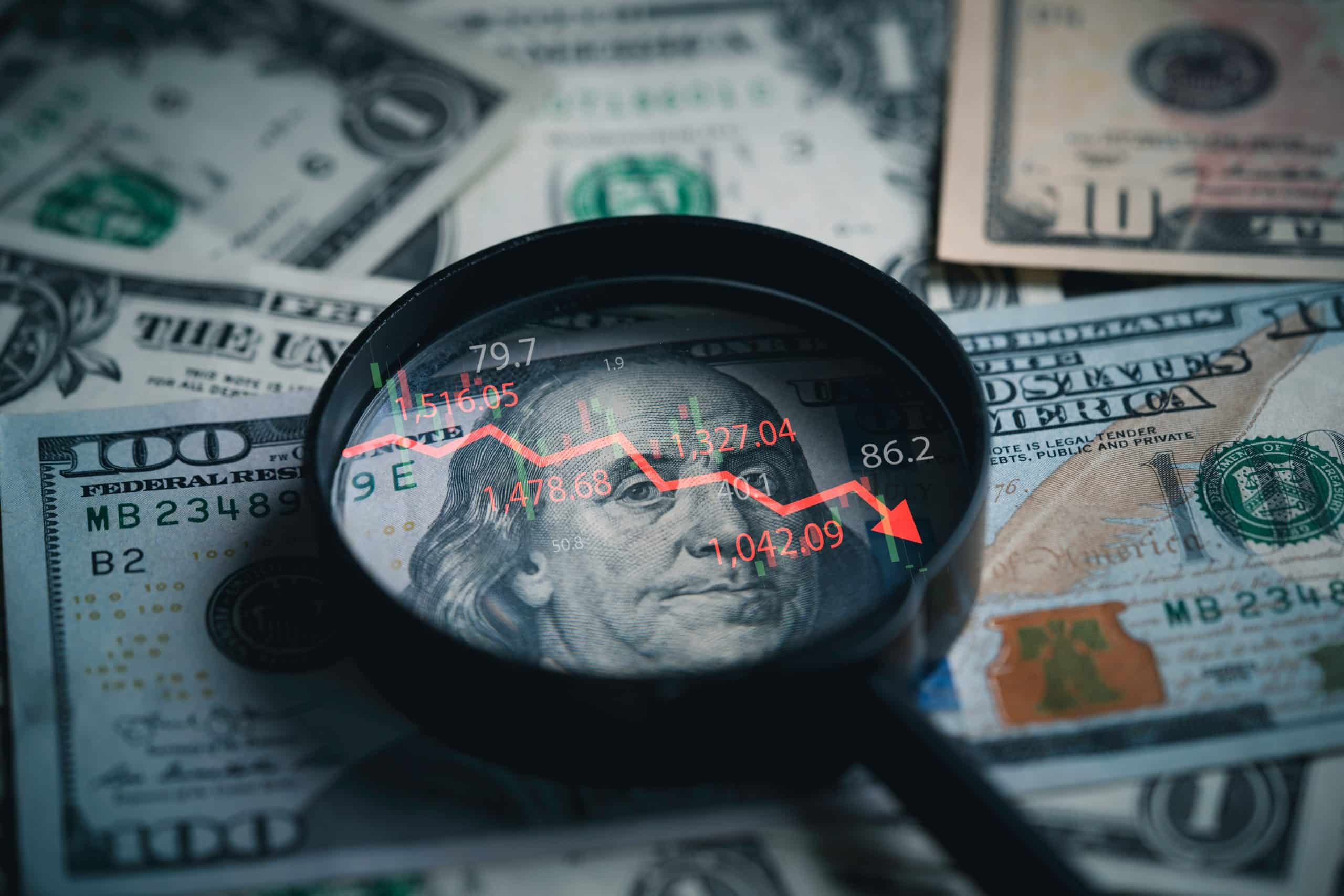The Impact of the September Fed Cut on Dollar Value
The financial landscape can change swiftly, and one of the most influential players in this arena is the Federal Reserve. As investors keep a keen eye on monetary policy, the anticipated September Fed cut has sparked significant discussions and speculation regarding its possible impact on the dollar’s value. Understanding the correlation between interest rates and currency strength is crucial for anyone looking to navigate the investment waters effectively.
When the Federal Reserve decides to cut interest rates, it generally signals a shift toward a more accommodative monetary policy. Lower interest rates tend to reduce the yield on fixed-income investments, making them less attractive to investors compared to higher-yield alternatives abroad. This shift often leads investors to pull away from the dollar in search of better returns elsewhere.
The implications of a Fed rate cut can be broken down into several key points:
- Currency Depreciation: A cut in interest rates usually leads to the depreciation of the dollar. When investors expect lower returns, the demand for dollars decreases, pushing its value down in the global market.
- Inflation Expectations: Lower interest rates may also amplify inflation fears. If investors believe that a rate cut will lead to increased inflation, they may choose to move their assets to more stable currencies, further diminishing the dollar’s strength.
- Investment Allocation: Portfolio managers often react to rate cuts by diversifying their assets. This means they may invest in foreign markets or commodities, which can result in fewer dollars being circulated and a declining value.
- Equity Market Movements: As rates lower, stocks can become more attractive due to cheaper borrowing costs for companies. This can shift investor focus away from the dollar, affecting its value negatively.
The potential for a September Fed cut has led many to speculate about the immediate effects on the dollar’s value. Stronger global economies elsewhere may further complicate this picture. Nations such as Canada and Australia, for instance, could see their currencies rise if they maintain stable interest policies while the U.S. moves toward cuts. This relative strength can enhance the appeal of those currencies compared to the dollar.
It’s important to note that markets often respond quickly to perceptions around Fed actions. The anticipation of a rate cut can lead to a decrease in the dollar’s value well before the decision is made. Investors typically try to position themselves ahead of these events, causing fluctuations in currency trading as speculations arise. This can create volatility, making it even more challenging for average investors to maneuver effectively.
While many will argue against making decisions based solely on anticipated monetary policy changes, ignoring these factors can also be a gamble. Awareness of interest rate trends allows you to formulate informed investment strategies. Here are some practical ways to prepare:
- Stay Informed: Follow economic indicators that lead up to the Fed’s meeting. Look at employment rates, inflation numbers, and consumer spending trends.
- Consider Diversification: Maintain a balanced portfolio that includes various asset types, thus protecting against potential dollar depreciation.
- Review Currency Exposure: If you own foreign stocks or bonds, consider how a weaker dollar may affect your overall returns and risk profile.
- Plan Your Cash Flow: If you rely on dollar-denominated income, think about how a potential drop in its value may affect your purchasing power.
The potential Fed cut in September can indeed reshape the dollar’s value and the trading environment significantly. Investors must arm themselves with information and strategies that enable them to navigate these turbulent waters. By understanding the relationship between interest rates and currency values, you position yourself not just to react, but to proactively engage with the market.
As the Fed’s September meeting approaches, the focus will remain on how the dollar reacts to anticipated monetary policy changes. Whether you’re a seasoned investor or just beginning, keeping an eye on the Fed’s decisions will prove invaluable in your financial journey. Ultimately, preparedness and knowledge can be your greatest allies amid uncertainty.
Investor Strategies in a Weakening Dollar Environment
The recent trend of a weakening dollar has left many investors scrambling to adapt their strategies. With economic indicators suggesting that the dollar may continue to slip, understanding how to navigate these waters is crucial for anyone looking to optimize their investment portfolio. Here are some effective strategies for capitalizing on opportunities while managing risks in a dollar-weak environment.
Focus on Foreign Investments
A declining dollar often boosts foreign investments. When the dollar weakens, assets priced in other currencies can become more appealing. Investors may want to consider:
- International stocks: Look for companies that generate revenue outside the U.S. Their profits can increase when converted back into a weaker dollar.
- Emerging markets: Countries with growing economies may offer better returns, especially as foreign currencies gain against the dollar.
- Global mutual funds: These funds often contain diverse holdings that track international markets, providing an excellent hedge against a weakening dollar.
Invest in Commodities
Commodities like gold, silver, and oil typically perform well when the dollar falls since they are priced in dollars. As a result, investors may want to explore:
- Precious metals: Gold is often seen as a safe haven during times of dollar weakness, making it a popular choice among investors.
- Energy commodities: A weak dollar generally leads to higher oil prices, giving energy stocks a potential boost as well.
- ETFs that focus on commodities: These can offer a more accessible way for investors to gain exposure without dealing with the physical assets directly.
Consider Currency Diversification
Investors should contemplate diversifying their currency holdings. This can protect them from volatility associated with a weakening dollar. Strategies include:
- Foreign currency accounts: Holding funds in stronger currencies can provide a safety net against fluctuations.
- Currency ETFs: These allow you to invest directly in foreign currencies, potentially benefiting from a dollar decline.
- FX options and futures: More advanced investors might explore trading contracts that allow speculation on currency movements.
Real Estate Investments
Real estate can also act as a hedge against a declining dollar. Real property often appreciates in value when inflation increases, which can accompany a weak dollar. Consider these real estate strategies:
- Real Estate Investment Trusts (REITs): They offer a way for investors to get real estate exposure without directly buying properties.
- Foreign properties: Investing in properties abroad may offer better returns, especially if the local currency strengthens against the dollar.
Monitor Inflation Rates
Investors need to keep a close watch on inflation rates, as a weakening dollar often correlates with rising inflation. Here’s how you can prepare:
- Inflation-protected securities: Consider investing in Treasury Inflation-Protected Securities (TIPS), which offer protection against increasing prices.
- Growth stocks: Companies that can pass on rising costs to consumers, such as those in essential goods, may provide stability during inflationary periods.
Stay Informed and Flexible
The market conditions can change rapidly. Staying updated on economic trends and being prepared to adjust your investment strategy is vital. This means:
- Monitoring Federal Reserve announcements: Pay attention to interest rate changes, as they can significantly impact dollar strength.
- Using economic indicators: GDP growth, employment rates, and other metrics can provide insight into where the dollar may be headed.
In a weakening dollar environment, strategic investment choices can help mitigate risks while seizing opportunities. By diversifying into foreign assets, commodities, real estate, and staying informed on economic shifts, investors can position themselves more favorably. Adapting to the changes in the dollar’s value not only protects investments but can also enhance potential profits.
Conclusion
As we look ahead to the potential repercussions of the September Fed cut, the dollar’s vulnerability becomes increasingly evident. A decrease in interest rates typically leads to a softer dollar, prompting investors to strategize around this looming reality. Understanding the relationship between monetary policy and currency value is crucial for anyone participating in the financial markets.
When the dollar weakens, it creates opportunities as well as challenges for investors. You might consider diversifying your portfolio to include assets that usually perform well in such an environment, such as commodities or international stocks. These can provide a hedge against dollar depreciation. Additionally, maintaining a close watch on overseas markets could unveil investment opportunities as foreign currencies gain strength relative to the dollar.
Investors can also turn their attention to real estate or bonds, often seen as safer bets during turbulent times. By adapting your strategies in response to the Fed’s actions, you can mitigate risks and potentially capitalize on rewarding investments. Keeping an eye on economic trends and central bank decisions will empower you to make informed choices.
As the landscape shifts, your willingness to be adaptable and proactive in response to the Fed’s monetary policy will play a critical role in navigating a weakening dollar. By strategically approaching investment choices, you can safeguard your wealth and position yourself for future growth in a post-Fed cut economy. Remember, smart investing is about staying informed and agile in the face of change.
Comparison, examination, and analysis between investment houses
Leave your details, and an expert from our team will get back to you as soon as possible
* This article, in whole or in part, does not contain any promise of investment returns, nor does it constitute professional advice to make investments in any particular field.
To read more about the full disclaimer, click here- Articles
- •
- 8 Min Read
- •
- ago 6 minutes
Leading Robotics Stocks on Wall Street: The Companies Shaping the Future of Automation
The global robotics market is undergoing a rapid transformation, with technology breaking boundaries and reaching almost every sector – from
- ago 6 minutes
- •
- 8 Min Read
The global robotics market is undergoing a rapid transformation, with technology breaking boundaries and reaching almost every sector – from
- orshu
- •
- 7 Min Read
- •
- ago 11 minutes
 Global Markets Recap: Tuesday, August 12, 2025 – Full Analysis and Outlook for Wednesday, August 13, 2025
Global Markets Recap: Tuesday, August 12, 2025 – Full Analysis and Outlook for Wednesday, August 13, 2025
Overview Global markets showed a broadly positive tone on Tuesday, August 12, 2025, with strong gains across major U.S. and
- ago 11 minutes
- •
- 7 Min Read
Overview Global markets showed a broadly positive tone on Tuesday, August 12, 2025, with strong gains across major U.S. and
- Ronny Mor
- •
- 16 Min Read
- •
- ago 27 minutes
 BNY Appointed Investment Manager for Openeden’s Tokenised US Treasury Fund
BNY Appointed Investment Manager for Openeden’s Tokenised US Treasury Fund
The Impact of BNY Appointed Investment Manager for Openeden's Tokenised US Treasury Fund on the Financial Sector BNY Mellon, a
- ago 27 minutes
- •
- 16 Min Read
The Impact of BNY Appointed Investment Manager for Openeden's Tokenised US Treasury Fund on the Financial Sector BNY Mellon, a
- sagi habasov
- •
- 17 Min Read
- •
- ago 1 hour
 Is Ford Stock’s Juicy Dividend Still Safe Amid the Global Tariff War?
Is Ford Stock’s Juicy Dividend Still Safe Amid the Global Tariff War?
The Impact of Global Tariff Wars on Ford Stocks and Its Dividend Sustainability The ongoing global tariff wars have raised
- ago 1 hour
- •
- 17 Min Read
The Impact of Global Tariff Wars on Ford Stocks and Its Dividend Sustainability The ongoing global tariff wars have raised











